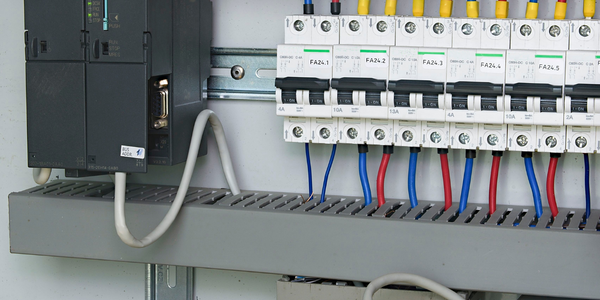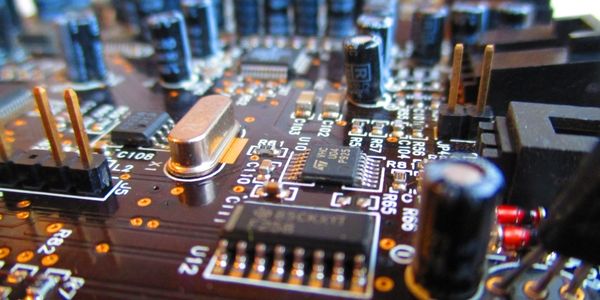Customer Company Size
SME
Region
- America
Country
- United States
Product
- Axis ERP
Tech Stack
- ERP System
Implementation Scale
- Enterprise-wide Deployment
Impact Metrics
- Productivity Improvements
- Cost Savings
Technology Category
- Functional Applications - Enterprise Resource Planning Systems (ERP)
Applicable Industries
- Electronics
Applicable Functions
- Discrete Manufacturing
Use Cases
- Manufacturing System Automation
Services
- System Integration
About The Customer
Haynes Wire Company, a subsidiary of Haynes International, Inc., is a world leader as the inventor, developer and producer of quality, high-performance nickel- and cobalt-based alloys. The company produces stainless-steel medical wire and nickel- and cobalt-based wire for structural and welding applications. Based in Mountain Home, N.C., Haynes Wire’s 70 employees generate over 2 million pounds of nickel-based, cobalt-based and stainless steel wire products annually. The company was founded in 1954 and was purchased by Haynes International in 2004.
The Challenge
Haynes Wire Company was struggling with an outdated and inadequate incumbent system that was increasingly unable to manage and provide access to the information needed to effectively operate its growing and expanding business. The company had a lack of information on per-order costs, which was a serious concern in such a competitive field. The order setup was cumbersome and had to be redone for each new order. The legacy system’s minimal reporting and tracking capabilities and lack of routing history left the company with little in the way of information tools to run the business.
The Solution
Haynes Wire Company selected and implemented a packaged and supported ERP system suited for the needs of a wire producer: Axis ERP from Aptean. The Aptean sales and support team truly understood the wire business, and its software fit Haynes Wire’s requirements very well. The coil tracking and heat traceability throughout the system made the difference. The system was implemented with very little modification, which was a key factor in Haynes Wire’s decision. The implementation was completed one month ahead of schedule (in eight months) and under budget.
Operational Impact
Quantitative Benefit

Case Study missing?
Start adding your own!
Register with your work email and create a new case study profile for your business.
Related Case Studies.

Case Study
Remote Temperature Monitoring of Perishable Goods Saves Money
RMONI was facing temperature monitoring challenges in a cold chain business. A cold chain must be established and maintained to ensure goods have been properly refrigerated during every step of the process, making temperature monitoring a critical business function. Manual registration practice can be very costly, labor intensive and prone to mistakes.

Case Study
Predictive maintenance in Schneider Electric
Schneider Electric Le Vaudreuil factory in France is recognized by the World Economic Forum as one of the world’s top nine most advanced “lighthouse” sites, applying Fourth Industrial Revolution technologies at large scale. It was experiencing machine-health and unplanned downtime issues on a critical machine within their manufacturing process. They were looking for a solution that could easily leverage existing machine data feeds, be used by machine operators without requiring complex setup or extensive training, and with a fast return on investment.

Case Study
Cloud Solution for Energy Management Platform-Schneider Electric
Schneider Electric required a cloud solution for its energy management platform to manage high computational operations, which were essential for catering to client requirements. As the business involves storage and analysis of huge amounts of data, the company also needed a convenient and scalable storage solution to facilitate operations efficiently.

Case Study
Leveraging the IoT to Gain a Competitive Edge in International Competition
Many large manufacturers in and outside Japan are competing for larger market share in the same space, expecting a growing demand for projectors in the areas of entertainment, which requires glamor and strong visual performance as well as digital signage that can attract people’s attention. “It is becoming more and more difficult to differentiate ourselves with stand-alone hardware products,” says Kazuyuki Kitagawa, Director of Service & Support at Panasonic AVC Networks. “In order for Panasonic to grow market share and overall business, it is essential for us to develop solutions that deliver significant added value.” Panasonic believes projection failure and quality deterioration should never happen. This is what and has driven them to make their projectors IoT-enabled. More specifically, Panasonic has developed a system that collects data from projectors, visualizes detailed operational statuses, and predicts issues and address them before failure occurs. Their projectors are embedded with a variety of sensors that measure power supply, voltage, video input/ output signals, intake/exhaust air temperatures, cooling fan operations, and light bulb operating time. These sensors have been used to make the projector more intelligent, automatically suspending operation when the temperature rises excessively, and automatically switching light bulbs. Although this was a great first step, Panasonic projectors were still not equipped with any capability to send the data over a network.









